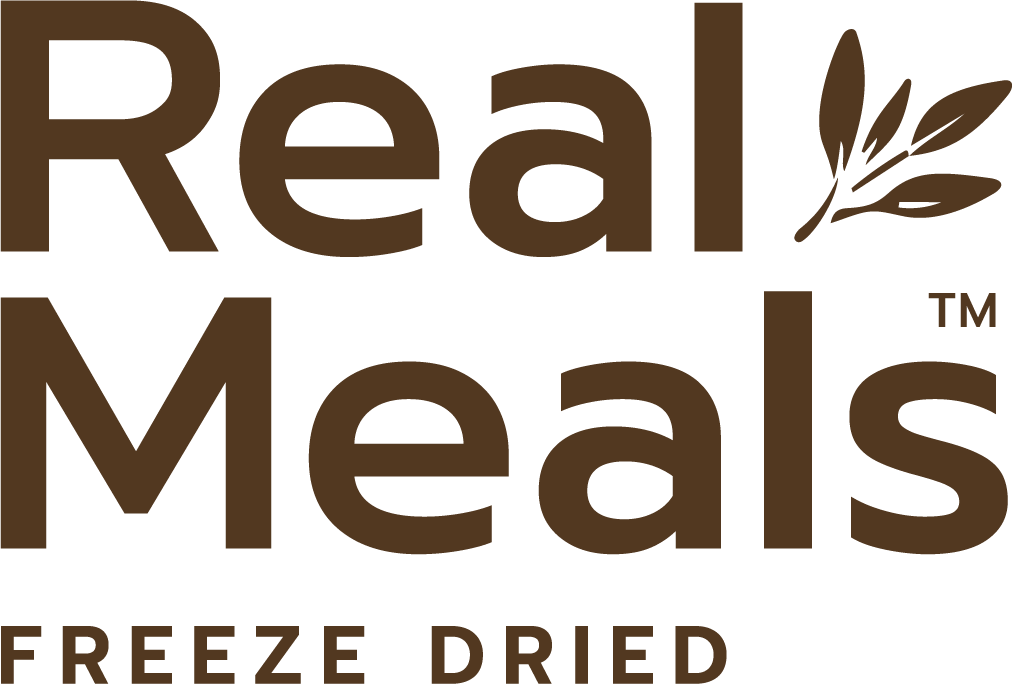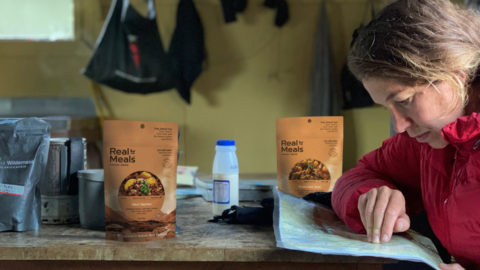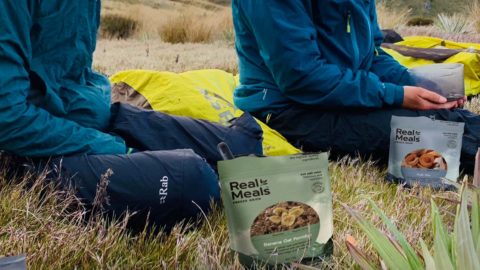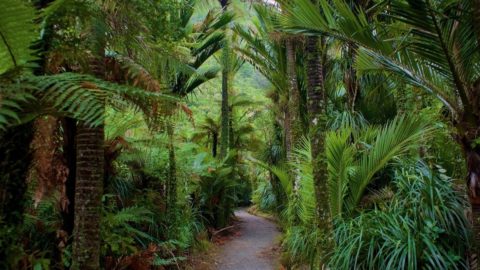It’s not everyone’s cup of tea, but for a sector of New Zealand people it’s a way of life, a popular form of recreation, a way to escape the hustle, a way to click your internal ‘refresh’ button.
Those who know, know. There is something unique and satisfying about the arrival, getting to the destination, the end of journey, for the day at least.
Is there other people there, is the fire going, is there a spare bunk, how’s the firewood stack?
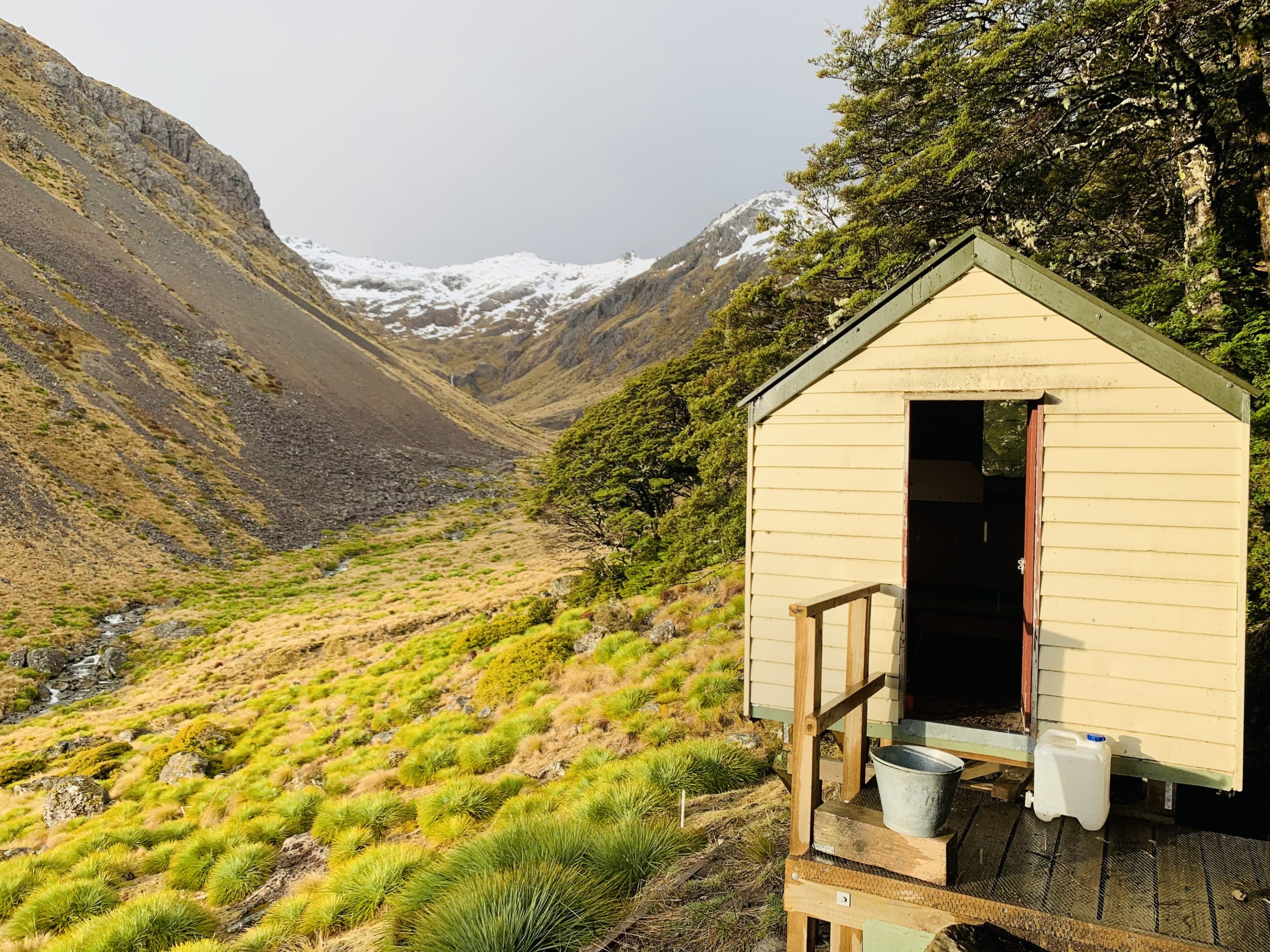
Can you get a better spot to enjoy Real Meals freeze dried nutrition!
The New Zealand hut collection is extremely unique. It is considered the biggest and most organised hut network in the world. Scattered throughout the wilderness areas are 962 huts (at time of writing).
They come in a range of sizes, styles and shapes. Each hut owns its special location, providing a place for hikers to rest and recover. They are the ultimate form of shelter from bad weather for those moving through the mountains.
The majority of the huts were built by the now defunct New Zealand Forest Service for deer culling operations. Other huts were built by alpine clubs, schools, and ski clubs.
Most huts are serviced and maintained by DOC, but more and more huts are being cared for by local groups and trusts, taking pride in their little gems in their hill country.
The hut community has its own culture, there is hut etiquette. All users of huts are guests, and with that comes polite ways to share and respect the hut and other guests. Huts in high use areas often have booking systems, but the remote huts are a first in first served basis. As a rule of thumb, the more remote the hut, the better cared for it is.
If you unfold a map of a National Park or Forest Park, it’s not hard to notice the labyrinth of tracks that link all the huts together. In most cases, the huts are about three to four hours apart. For keen trampers, moving between huts is as easy as going to the next hut for lunch, then onto the next one for the night. For more relaxing trips, just moving to the next hut can be enough, or even staying multiple days in one hut and exploring the surrounding area. Hunters and people fishing often prefer to base themselves from a hut and move freely each day without their full packs.
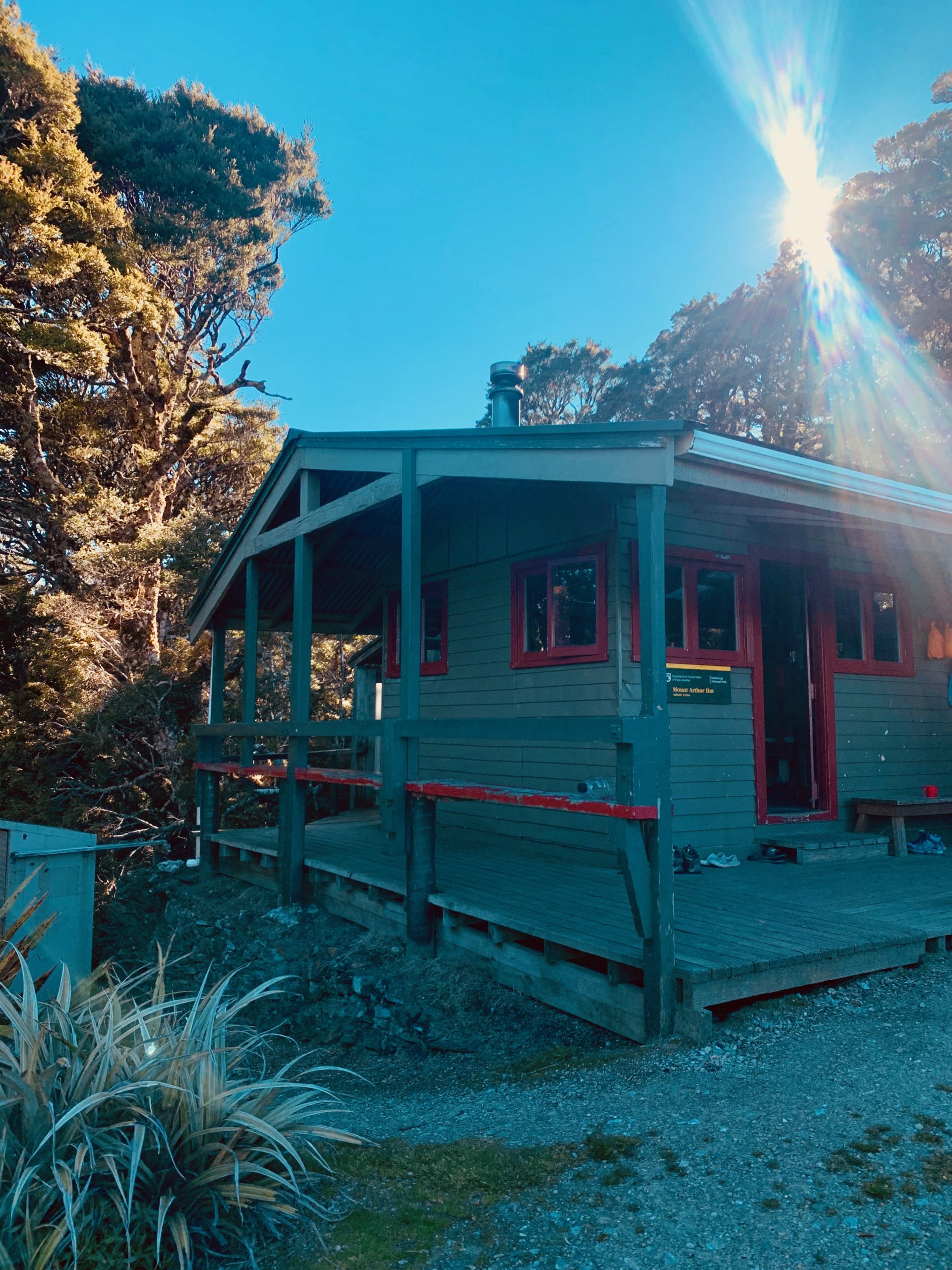 Huts are nearly always a welcome sight. They greet weary and aching trampers who have traversed rugged terrain to reach them, relative to ones ability. There is something special about arriving at a hut, whether it is a regular and familiar local hut, or a first time visit to a hut in a new area you’re exploring.
Huts are nearly always a welcome sight. They greet weary and aching trampers who have traversed rugged terrain to reach them, relative to ones ability. There is something special about arriving at a hut, whether it is a regular and familiar local hut, or a first time visit to a hut in a new area you’re exploring.
Plonking your pack down, it’s time for a brew and a biscuit. Taking boots off can be relieving. Each hut has a ‘hut book’, a log of previous visitors, with tips and information from other parties. It’s always interesting to see who was last at the hut, and where they went.
Dinner time in huts has changed significantly over the past 20-years. A few decades ago the huts had open fire places. They would have a full range of pots and pans. Trampers would often carry fresh food, making stews over flames, cooking meat and vegetables. Over time, many huts have replaced the open fire places with stoves, better for heating the hut, and using less wood. These stoves are generally not great for cooking on, but technology with camp cookers has seen more and more trampers moving through the wilderness with their own cookers, pots and utensils.
The other big game changer for meal time in the mountains was the invention of freeze dried food, a technologically advanced form of food preservation designed by NASA to feed astronauts orbiting the earth and flying to the moon. Freeze dried food retains it’s shape and nutritional value by drying the food under a pressure vacuum which removes all the water. It means that the users simply return the water to the dried food to make their meal.
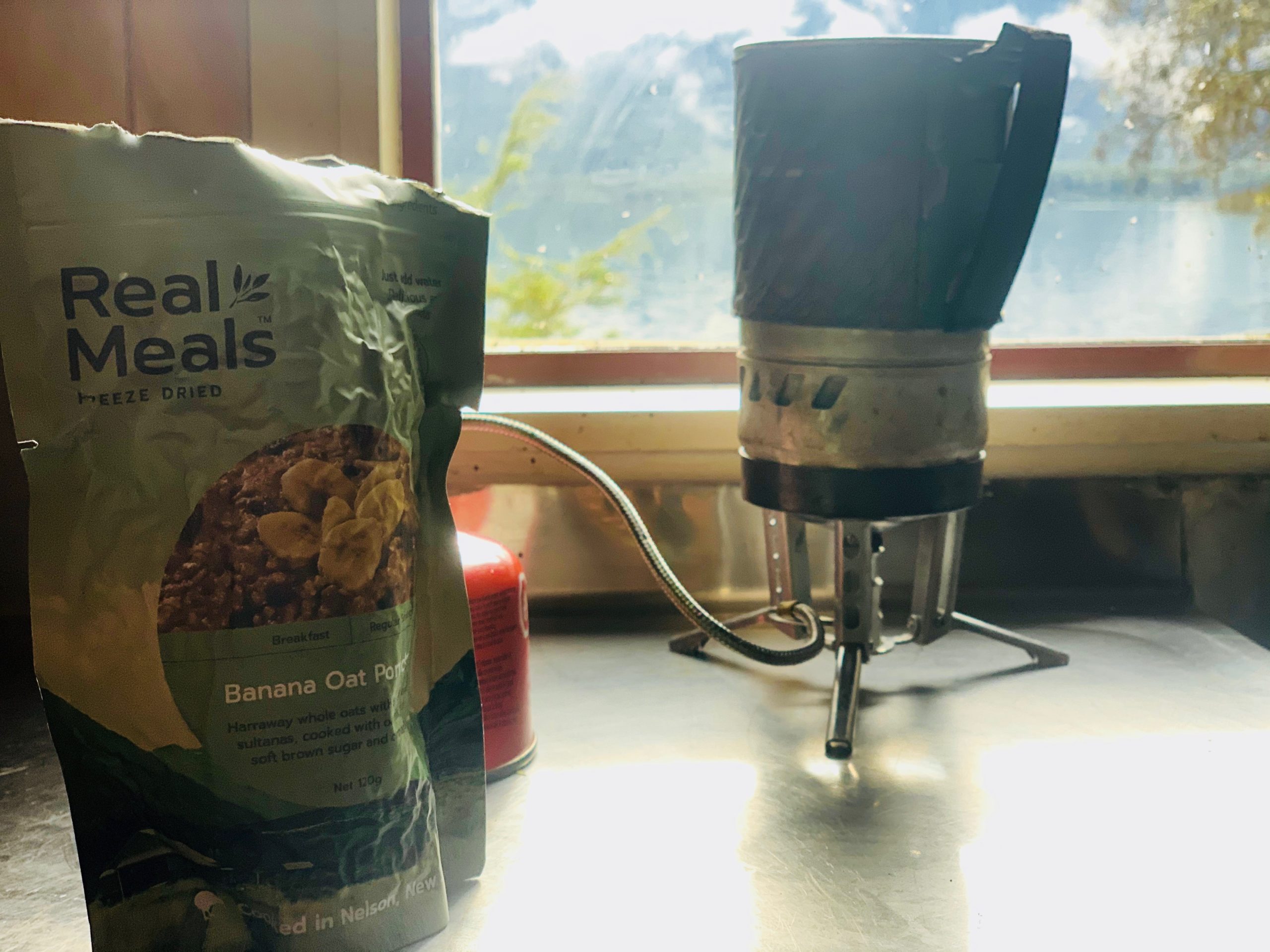
If we’re honest, the quality of freeze dried food wasn’t amazing when it first came to market, but in terms of convenience, there is nothing better. It is ultra lightweight, is prepared in just minutes, and has a super long shelf life. The benefits tenfold, the downside was that it often wasn’t great tasting. Some people have even been put off tramping because they thought it meant having to eat freeze dried food!
Real Meals offers something different for those seeking high quality food on their trips. Using an innovative process and modern technology, Real Meals deliver the ultimate hut dining experience, whether it’s breakfast, lunch, dinner or dessert. All ones needs is the ability to boil the billy, pour a cup of water into the bag and let the magic take place.
Hut life is awesome, getting back to basics, connecting with nature, it’s a healthy pursuit. The team at Real Meals love dispatching meals from the factory, because we know the meals are going to end up in wonderful huts throughout the country, fueling people to have amazing experiences out there.
What’s your next hut to overnight in?

